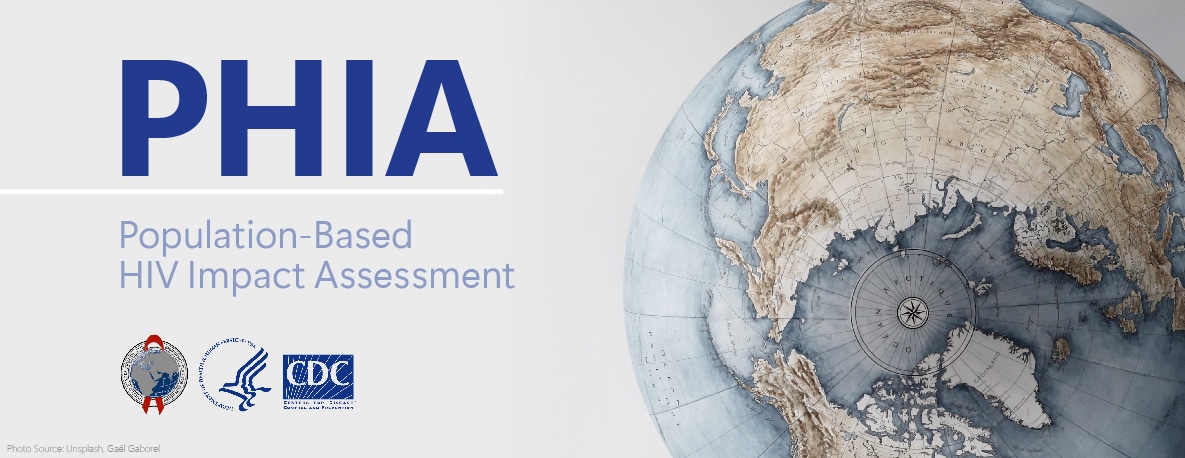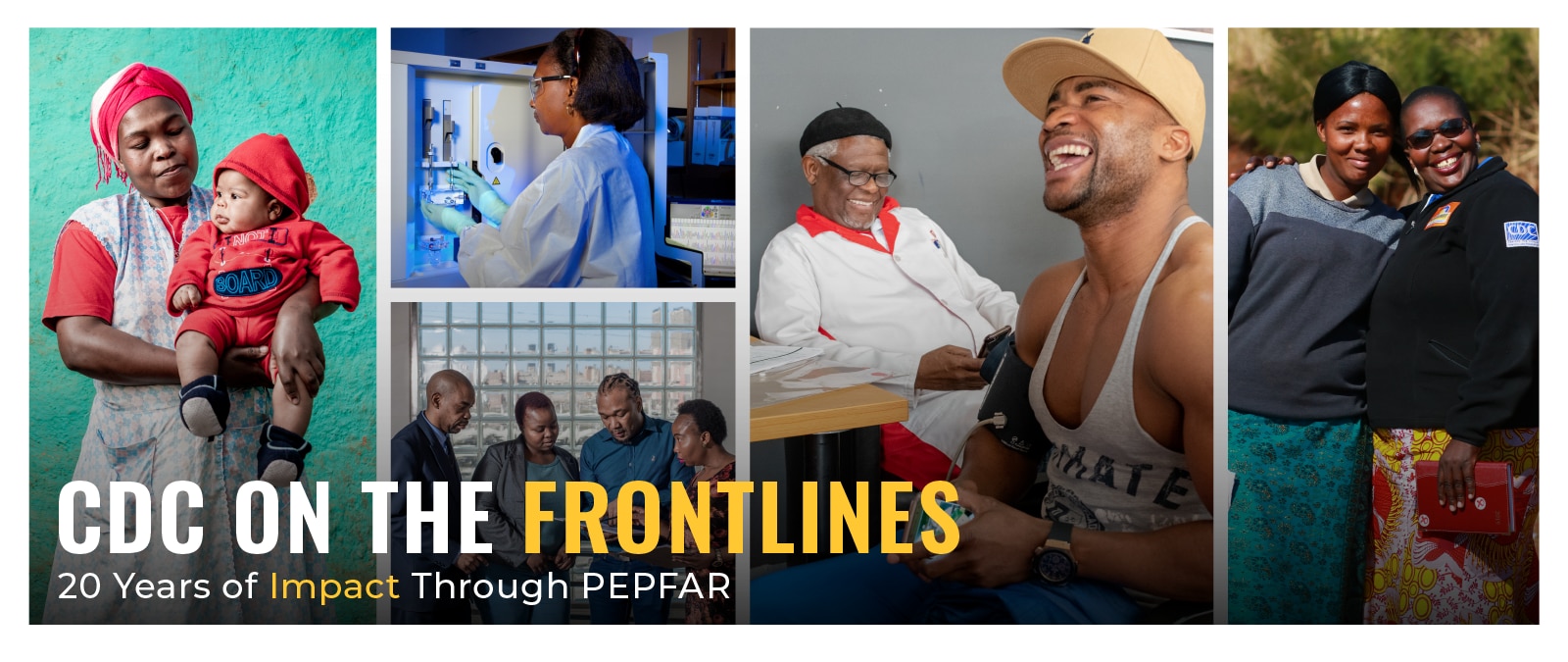Eswatini Country Profile

Eswatini Country Profile
Discover more about CDC’s work in Eswatini by viewing our detailed country profile
Country Overview
CDC works closely with the Ministry of Health of the Kingdom of Eswatini (eSwatini) and other partners to improve the coverage and quality of HIV and tuberculosis (TB) treatment services throughout the country. CDC supports the eSwatini National AIDS Program and the National TB Control Program to improve provider- and client-initiated HIV testing and counseling services, prevention of mother-to-child transmission of HIV services, and pediatric and adult antiretroviral treatment programs. CDC also assists the Ministry in linking people testing positive for HIV to appropriate services and retention in treatment.
Per Capita GNI
$3,800
(2022)
Population (million)
1.2
(2022)
Under 5 Mortality
52.6/1,000 Live Births
(2021)
Life Expectancy
57 Years
(2021)
Estimated HIV Prevalence
25.9%
(Ages 15-49): (2022)
Estimated AIDS Deaths
2,600
(Age≥15) (2022)
TB Treatment Success Rate
81%
(2020)
Estimated TB Incidence
348/100,000
(2021)
Estimated Orphans Due to AIDS
57,000
(2022)
TB patients with known HIV-status who are HIV-positive
63%
(2021)
Reported Number Receiving Antiretroviral Therapy (ART)
205,009
(Age≥15) (2022)
The Centers for Disease Control and Prevention (CDC) is working closely with the Ministry of Health (MOH) of the Kingdom of Eswatini (eSwatini) and partners to build capacity to improve the coverage and quality of HIV and Tuberculosis (TB) and treatment services throughout all four regions to achieve 95/95/95 by 2020, and to ensure sustainable health systems. HIV and Tuberculosis (TB) continue to be a major cause of morbidity and mortality in eSwatini.
Improving coverage and quality of HIV/TB Treatment Services strategic approaches: Develop integrated regional service delivery mechanisms focusing on facility and community populations through MOH’s Regional Health Management Teams (RHMTs):
1) Formulate key policies and procedures to guide towards epidemic control; implement quality management systems to attain laboratory and referral facility certifications; supportive supervision and mentorship; quality assurances processes including Site Improvement through Monitoring System (SIMS); customer satisfaction surveys, and process and compliance audits.
2) Strengthen strategic information systems to ensure accurate data collection and reporting to monitor progress and guide strategic decision-making to achieve World Health Organization (WHO) 95/95/95 goals.
Key Activities and Accomplishments
Strategic Information: CDC supported the Government of eSwatini to successfully conduct the HIV Incidence Measurement Survey (SHIMS) 2, which is a part of the global population-based HIV impact assessment (PHIA) initiative. The survey was conducted from August 2016 to April 2017, and preliminary results were disseminated in July 2017. CDC supports the Ministry of Health’s Health Research Training Program (HRTP), which trains local mid-career professionals affiliated with the health care system on research methodology. CDC supports the MOH’s Health Research Units (HRU) and Epidemiology and Disease Control Unit (EDCU) as well as the Central Statistics Office (CSO) to promote routine collection, use, and dissemination of data for effective programming and policy making.
Prevention, Treatment, Linkage and Retention: CDC and its implementing partners provide central and regional-level support to the eSwatini National AIDS Program and the National TB Control Program. Support of comprehensive HIV services is provided to regions to improve coverage and quality of prevention of mother to child transmission (PMTCT) of HIV, and pediatric and adult antiretroviral treatment (ART). Provide clinical and community-based services, mentoring, laboratory support, provider and client-initiated HIV testing and counseling services, PMTCT, and blood safety. CDC assists the MOH in planning and implementing high quality, decentralized HIV testing and treatment services (including scaling up HIV index and self-testing, Test and Start, and routine viral load monitoring). Community HIV testing services are enhanced under the ARROWS project (ART Referral, Retention, and Ongoing Wellness Support).
Regional Health Management: Regional referral facilities, RHMT and Directorate have been trained and are now implementing functional components. The goal is to create a seamless management process from the facility, through the RHMTs to the Directorate level. The World Health Organization (WHO) Stepwise Laboratory Improvement Process Towards Accreditation (SLIPTA) is also ongoing through all major public laboratories in the country.
Continuous Quality Improvement: All high volume CDC-supported facilities are assessed through Site Improvement Monitoring System (SIMS) to improve quality of service delivery and increase impact. The data is linked with Regional HIV Semi-Annual Reviews (REHSARs) and National HIV Semi-Annual Reviews (NAHSARs). These management review meetings, organized by MOH and supported by CDC, provide site, regional, and national-level performance feedback to health providers and program implementers.
Pharmaceutical and Laboratory: Extensive pharmaceutical policies, sustainable drug procurements and stock management, drug storage and distribution has been achieved. The country has significantly improved its laboratory capacity to perform viral load testing. The increase in capacity is enabling the country to move from targeted viral load testing to routine viral load testing.
Addressing TB: CDC supports comprehensive TB/HIV activities in eSwatini, including improving and integrating TB and HIV services for co-infected individuals, and providing isoniazid preventative therapy for all eligible HIV-positive individuals.

Tracking PEPFAR Impact Toward Global Targets
The U.S. Centers for Disease Control and Prevention (CDC) works with partners including host countries, local implementing partners, faith-based organizations, and other community-based organizations to measure progress towards HIV epidemic control in countries supported by the U.S. President’s Emergency Plan for AIDS Relief (PEPFAR).

Restoring the Life Blood of a Nation – Safe blood transfusions for the people of Eswatini
Over a decade ago, in countries, like Eswatini, that had been hard hit by the HIV epidemic, blood banks were beginning to run dry. Life-saving blood transfusions were unavailable because although the demand for blood products was rapidly increasing, the HIV epidemic made safe blood donations difficult and nearly impossible to obtain.

CDC On the Frontlines
Over the past 20 years, the U.S. President’s Emergency Plan for AIDS Relief (PEPFAR) has saved millions of lives as a leader in the global response to two of the world’s deadliest infectious diseases – HIV and TB. As a key implementing agency of the U.S. President’s Emergency Plan for AIDS Relief (PEPFAR), CDC is at the forefront of these global efforts to treat and prevent these diseases.